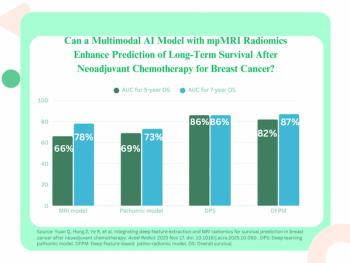
MRI and Cognitive Impairment in Professional Fighters
Combined MRI can help physicians track cognitive impairment among professional fighters.
T1-weighted and diffusion-weighted imaging can help detect and track cognitive impairment among active professional fighters, according to a study published in
Researchers from the Cleveland Clinic Lou Ruvo Center for Brain Health in Las Vegas, NV, sought to determine if combining multiple MR imaging modalities could reveal imaging biomarkers associated with cognitive changes in 297 active professional fighters. The data used for this study were collected as a part of the Professional Fighters Brain Health Study.
Twenty-four women and 273 men were recruited for the study; six women and 56 men returned for the follow-up examination. The researchers used only the male subjects’ findings in the study’s main analysis.[[{"type":"media","view_mode":"media_crop","fid":"62263","attributes":{"alt":"Virendra Mishra, PhD","class":"media-image media-image-right","id":"media_crop_7395551099582","media_crop_h":"0","media_crop_image_style":"-1","media_crop_instance":"7899","media_crop_rotate":"0","media_crop_scale_h":"0","media_crop_scale_w":"0","media_crop_w":"0","media_crop_x":"0","media_crop_y":"0","style":"height: 213px; width: 170px; border-width: 0px; border-style: solid; margin: 1px; float: right;","title":"Virendra Mishra, PhD","typeof":"foaf:Image"}}]]
After computerized testing, the subjects were divided into two groups, cognitively impaired and non-impaired. All subjects then underwent T1-weighted and diffusion-weighted imaging, and volume and cortical thickness, along with diffusion-derived metrics of 20 major white matter tracts were extracted. A classifier was designed to identify imaging biomarkers related to cognitive impairment and was tested in the follow-up dataset.
“DTI is specific to the white matter part of the brain and T1-weighted images are sensitive to the gray matter,” study lead author Virendra Mishra, PhD, said in a release. “By combining these approaches, we hoped to find imaging biomarkers on MRI that could be used to predict whether or not fighters will become impaired.”
The results showed seven imaging biomarkers related to cognitive impairment in the cohort of active professional fighters. Areas under the curve of 0.76 and 0.69 were obtained at baseline and at follow-up, respectively, with the optimized classifier.
The number of years of fighting had a significant negative association with fractional anisotropy of the forceps major and the inferior longitudinal fasciculus. The researchers also found a significant difference between the impaired and nonimpaired groups in the association of fractional anisotropy in the forceps major with number of fights and years of fighting. Fractional anisotropy of the inferior longitudinal fasciculus was positively associated with psychomotor speed in nonimpaired fighters but no association was observed in impaired fighters.
“We found lower gray matter volume and thickness measures along with lower white matter tract integrity at baseline measurements that declined over time in those with ongoing trauma, and only by looking at both were we able to predict which fighters would be cognitively impaired,” Mishra said in the release. “The combined observation of both gray and white matter as useful predictors of cognitive impairment is understandable because these two types of brain tissue work in tandem.”
The researchers note that this approach may also have applications in studying the impact of other contact sports that result in head injuries, and that further research may help determine the order in which brain regions are affected by repeated trauma. “One of the key questions we’re trying to answer is, what’s affected first, the neurons in the gray matter or the fiber tracts in the white matter?” Mishra concluded. “We don’t have the answer yet, but it’s something we are working on.”
Newsletter
Stay at the forefront of radiology with the Diagnostic Imaging newsletter, delivering the latest news, clinical insights, and imaging advancements for today’s radiologists.




























